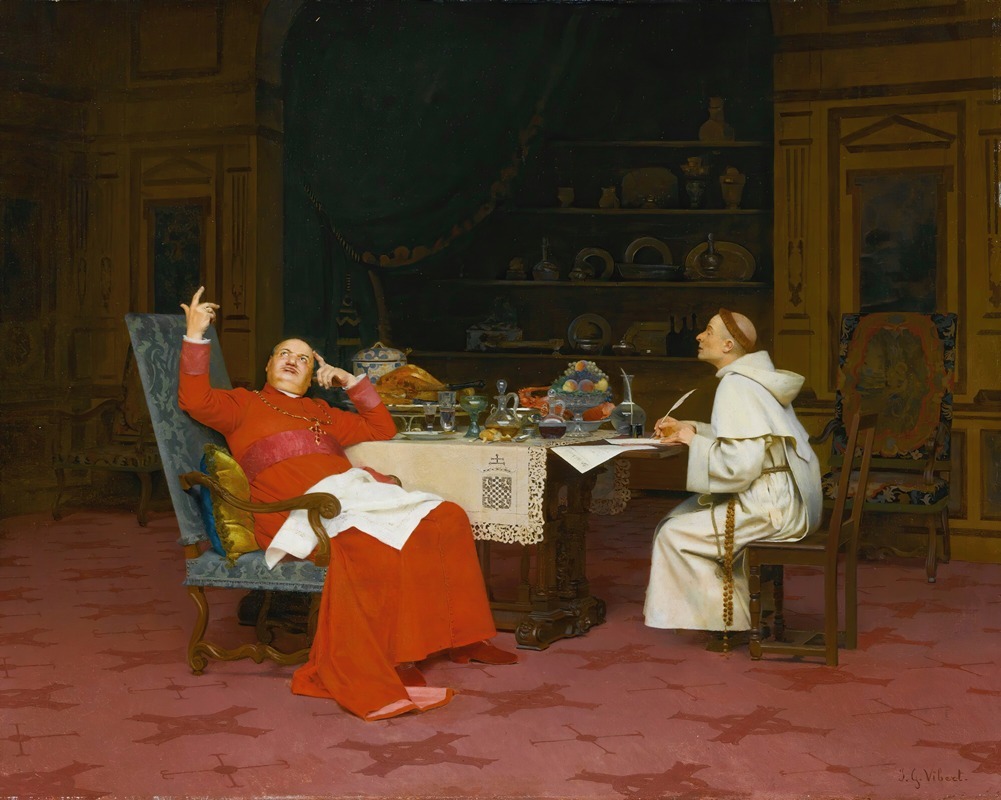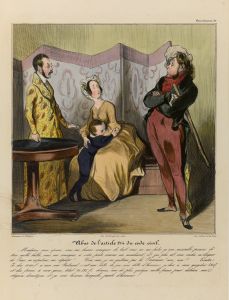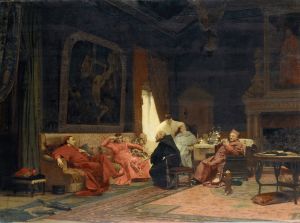
Sermon Sur L’abstinence
A hand-painted replica of Jehan Georges Vibert’s masterpiece Sermon Sur L’abstinence, meticulously crafted by professional artists to capture the true essence of the original. Each piece is created with museum-quality canvas and rare mineral pigments, carefully painted by experienced artists with delicate brushstrokes and rich, layered colors to perfectly recreate the texture of the original artwork. Unlike machine-printed reproductions, this hand-painted version brings the painting to life, infused with the artist’s emotions and skill in every stroke. Whether for personal collection or home decoration, it instantly elevates the artistic atmosphere of any space.
Jehan Georges Vibert (1840–1902) was a French academic painter known for his satirical and genre scenes, often depicting clergy and religious figures in humorous or ironic contexts. One of his notable works, Sermon sur l’abstinence (translated as Sermon on Abstinence), exemplifies his characteristic style of combining technical precision with subtle social commentary.
The painting portrays a scene in which a clergyman, presumably delivering a sermon on the virtues of abstinence, is juxtaposed with a lavishly set table laden with food and drink. Vibert’s attention to detail is evident in the intricate rendering of the priest’s ornate robes, the sumptuous textures of the tablecloth, and the gleaming surfaces of the dishes and glassware. The composition invites viewers to reflect on the contrast between the sermon’s moral message and the apparent indulgence suggested by the setting.
Vibert was part of the 19th-century French academic tradition, and his works often featured themes that critiqued or gently mocked the hypocrisy of certain societal institutions, particularly the Church. His paintings were well-received during his lifetime, and he exhibited regularly at the Paris Salon. Vibert’s ability to blend humor with technical mastery made his works popular among collectors, especially in Europe and the United States.
Sermon sur l’abstinence is consistent with Vibert’s broader body of work, which frequently explored the tension between appearance and reality. While the painting’s exact date of creation is not widely documented, it is representative of the artist’s mature period, during which he focused on satirical depictions of clergy and other figures of authority.
The painting is part of a tradition in 19th-century European art that used satire to comment on social and institutional norms. Vibert’s works, including Sermon sur l’abstinence, are often compared to those of contemporaries like Honoré Daumier, who also employed humor and irony to critique societal structures. However, Vibert’s approach is distinguished by its meticulous attention to detail and its focus on the opulence and contradictions of the clergy.
Today, Sermon sur l’abstinence is recognized as an example of Vibert’s skillful blending of technical artistry and social commentary. The painting is occasionally displayed in exhibitions of 19th-century European art, though its current location or ownership is not definitively documented in public records.

















